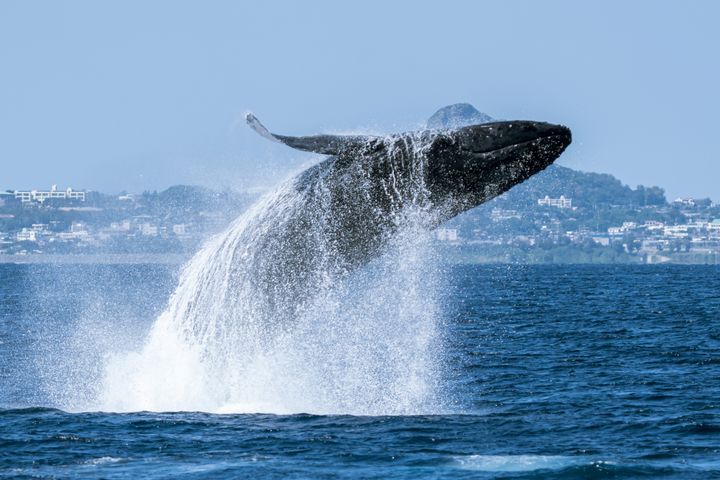
2023 has been a busy year for whales.
First, came the sinking of the boats. Then, two minke whales were returned to, well... Wales. And now, a new paper has come out after scientists have studied whales’ long-standing habit of throwing seaweed on their heads (I know, right?).
Apparently, the practice (also known as “kelping”) is a “global phenomenon” among the species, the Australian paper reads. It involves throwing clumps of seaweed up in the air and “using their heads to swim through it,” Dr. Olaf Meynecke, research fellow at Griffith University in Queensland and co-author of the study, told the BBC.
And it seems “all [whale species] have a preference to place it on their heads,” Maynecke adds.
The revival of humpback whale populations, alongside better aerial photography tech and social media use, allowed researchers to look further into the phenomenon than they could previously.
After looking at the social media and aerial pics, the scientists found that not only is the seaweed-flinging habit common across species; it could also have useful functions.
Like what?!
I know ― I thought that too. Well, to be specific, when I first found out about the seaweed flinging, I thought “OK, but that sounds kind of fun.“
Whales might think the same thing, it seems. The paper’s authors say that “Cetaceans frequently engage in playful ways, indicating innovation and creativity. Playful activity is prevalent among various species and can be exhibited by all age classes.“
This might help the animals to become more adaptive and knowledgeable, the scientists say, as well as helping to cultivate relationships. So, kelping, or ”kelping play,” could just be that; a bit of fun.
No wonder Dr. Meynecke said to the BBC that “Kelping can actually happen as a social activity.“
It could also be part of a whale’s self-care routine
The whales could also be exfoliating and flossing, the researchers suggested (yes, really).
After spotting whales plunging deep into the sea with tendrils of seaweed in their mouths, Dr. Meynecke says that “One good reason for this could be that it’s actually like a toothbrush, because that part of their mouths is extremely difficult to clean.”
“Another theory suggests that kelping may serve as a form of communication between whales or as a way to remove parasites, dead skin, and bacteria from their bodies,” the paper says.
Or, the sensation of seaweed on their heads might simply feel good to some whales. Certain species, like humpbacks, have sensitive rostral hairs, which might mean the feeling of the plant on the area might be “a welcome sensation.”
My loofah is starting to look a little disappointing now...